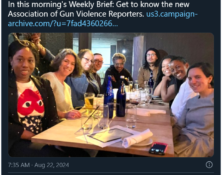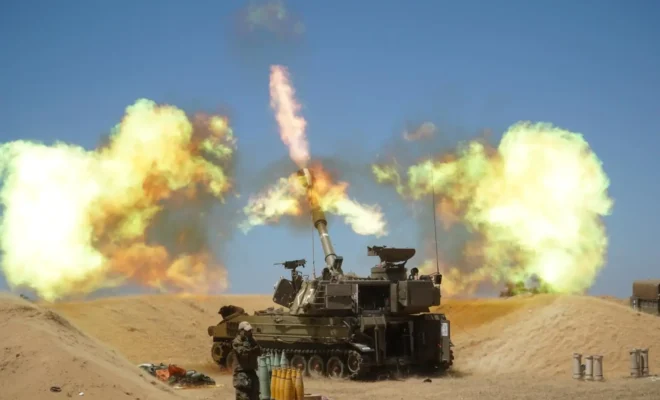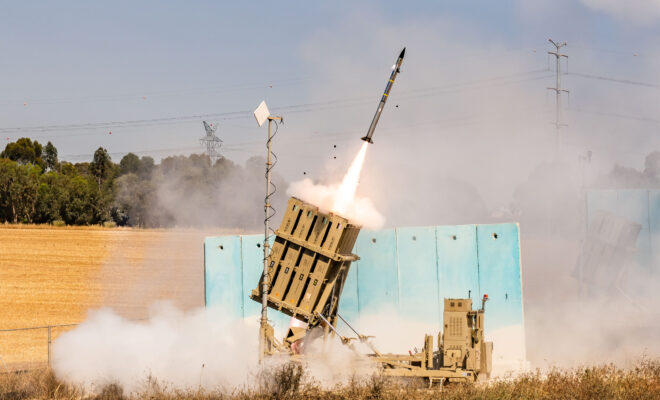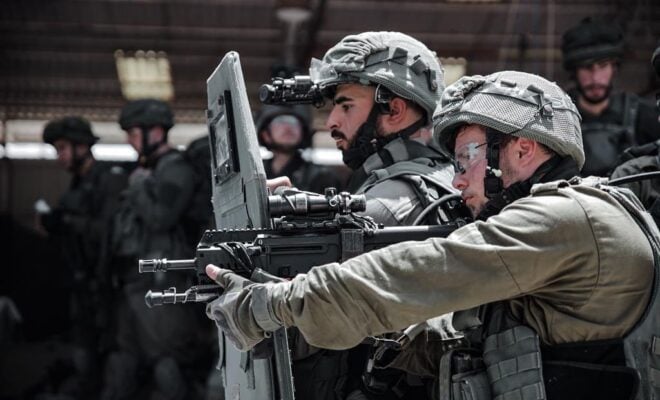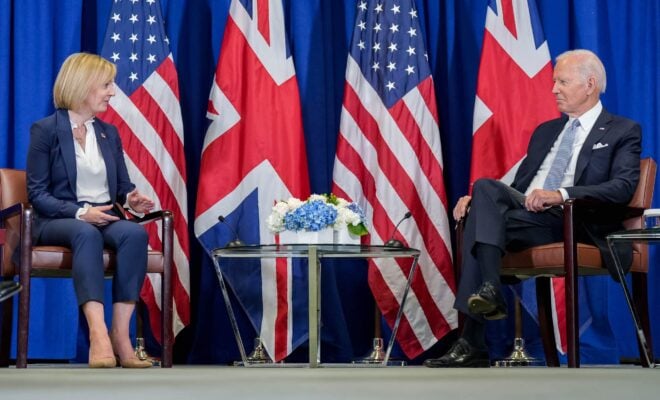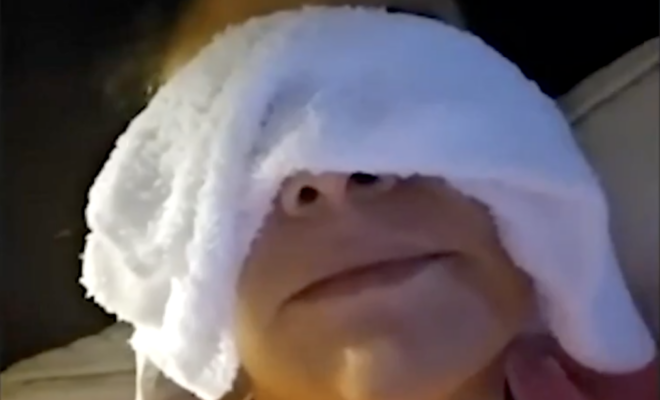Way back in 2010 or so, when I first started getting serious about an AR of my own, I spent an inordinate amount of time debating over the optic choice. While I ended up with a Trijicon TR24 1-4×24, considered one of the best LPVO choices at the time, the compact TA33 ACOG was high in the running. I didn't select it at the time because I wanted the versatility of an LPVO, but the idea of a compact prism scope always stuck with me.
By Matt Robertson, The Everyday Marksman
As the years went on and my rifles multiplied, so did my optic choices. I once again considered the tiny 3×30 TA33, but concerns over the narrow 3.7 degree field of view (FOV) swayed me away from it, so I picked up the Elcan SpecterOS 4x next, and then a Trijicon TA110 3.5×35 LEDS ACOG after that. Both of these are great optics in their own right, and I've been happy with both of them riding on my rifles.
I hadn't seriously thought about the TA33 for years until recently, when I noticed a trend in the market. I think compact prism optics are going to see a resurgence, so I decided to start with the one I'd always wondered about: the TA33.
The Trijicon TA33 is not a new optic, and by this point most people who care have probably already read about it or watch videos. However, there are still a few things I believe can be discussed. With that, I recently purchased one a few months ago from Eurooptic, paying retail price and using my own funds. Note that I did receive a very slight veteran's discount.
The Return of Compact Prism Optics
Class III Low Power Variable Optics have dominated the market for the last several years. The versatility that they bring to the table is obvious. I was firmly on board with the trend up to the popularity of 1-6x options, but as companies continued to compete and brought out 1-8x and 1-10x scopes, I started thinking that we're looking at diminishing returns.
Then I noticed another trend, as detailed by Jeff Gurwitch the last time I interviewed him. Many shooters equipped with 1-4x or 1-6x optics started leaving the scope on the maximum setting and then used an offset mini red dot for up-close shooting. It's faster to switch to a piggybacked or offset red dot than it is to reach up and turn a magnification ring.
If that's the case, then I couldn't help but ask if the next logical step was to save the weight and return to a lightweight prism scope with an offset mini red dot. To illustrate the difference here, a Sig Tango6 1-6×24 weighs 22.1 oz without a mount. Add something like an ADM Scout Mount for another 8 oz, and then another 4 oz for a mini dot and offset mount. Now we're up to 34 oz.
In contrast, the heavy-ish TA11 with mount and piggybacked RMR is around 22 oz total. That's nearly a 1 lb savings.
I'm not the only one who noticed this trend, and we've seen companies like Primary Arms, Swampfox, Vortex, Crimson Trace, and others stepping up to deliver on the promise of compact prism scopes.
So I decided to once again consider the system. I'm actually testing several scopes side by side, so look out for those in the future.
The TA33 3×30 Compact ACOG
Trijicon actually makes two different 3x models, with the TA33 3×30 being the more popular of the two. The slightly more compact TA50 3×24 model never caught as much traction, likely due to a few of the compromises it made.

Released around 2007, the TA33 is known for long eye relief relative to other models in the ACOG family. While the specs list it as 1.9 inches, in practice it is quite a bit longer, easily in the realm of many traditional scopes.
This makes it far more usable for most people who don't shoot nose to charging handle or want to keep their backup sights. It's also fantastic for running night vision behind it.
As I'll explain below, the real “killer feature” of the TA33 is the extremely forgiving eye box.
The TA33's forged aluminum housing measures 6.2 inches long, 2.2 inches wide, and 2.6 inches tall. It weighs 7.45 oz without a mount, putting it closer to the realm of micro red dots like the 5.2 oz Aimpoint M5 than traditional prism optics like my 17.4 oz Elcan SpecterOs 4x.
The bottom of the housing features the traditional “high” ACOG mount, designed for tucking into an AR-15 carry handle. The high configuration has a tube bored through the middle of it allowing the use use of iron sights. While the scope rides high in this configuration, it was about on par with the popular 1.93” height. I'm not going to lie, I actually like this setup and would seriously consider it in the future.
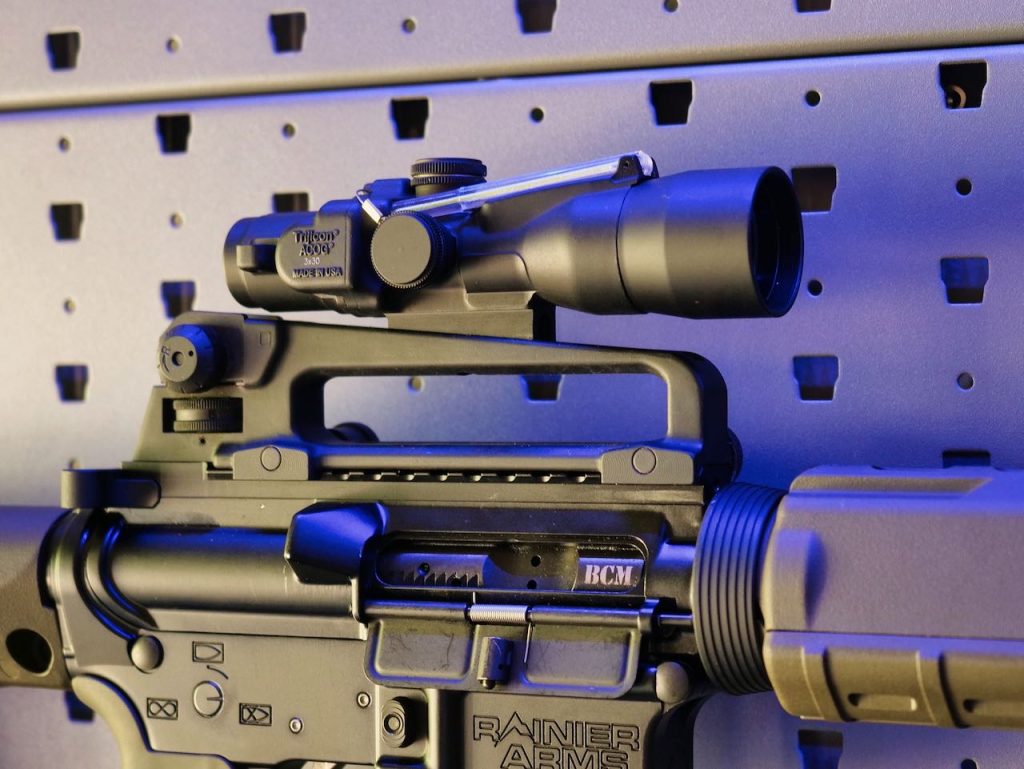
TA33-H Amber Horseshoe-Dot Reticle
Back in 2010, I always assumed I would get the green horseshoe dot model. I'm now very familiar with Trijicon's green, as I have it in both my TR24G as well as my LED TA-110 with the horseshoe. I could have gone that route again, but I've also always wondered about the Amber color that so many seem to ignore.
Trijicon recently discontinued the particular model I purchased. The amber horseshoe dot reticle was simply not a big seller for them. Despite that, I think my observations about the optic, the reticle, and the color will still be valid into the future, just not this exact combination.
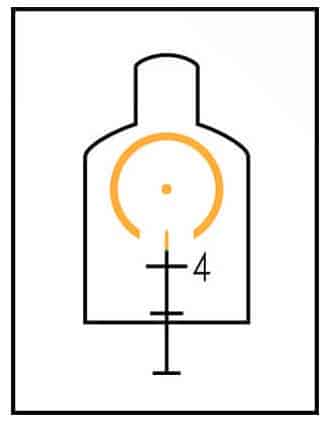
The .223 horseshoe dot reticle is calibrated for 62gr M855 fired from a 14.5” barrel. Trijicon makes finding detailed information about the reticle measurements nearly impossible, and I've not been able to locate official measurements anywhere for the TA33. However, since the horseshoe-dot design appears in several scopes, I'm making the leap that that the dimensions are similar between them.
The reticle consists of an illuminated 8.3 MOA outer ring and an illuminated 1.7 MOA inner dot. Most people round up and say it's 2 MOA.
The outer ring corresponds to the width of the average man's chest at 200 meters. The bottom of the ring is open, with a 5.5 MOA gap that corresponds to a man's chest at 300 meters. The top of the BDC stadia line is also illuminated, and the tip of it represents the 300 meter point of aim on the BDC.
From there, you have the classic ACOG BDC stadia lines going out to 600 meters.
What's the Deal with Amber Color?
When Trijicon started doing dual illuminated optics with fiber and tritium, the first color they released was amber. While red became the choice of the military and green has gained a lot of popularity in the civilian market, amber was first.
Amber sits between red and green on the wavelength spectrum seen below. In theory, it should work well even if someone has color blindness issues. In general, the human eye is most sensitive to the 555nm wavelength during the day, which is a bright yellow-green (think of a tennis ball). The amber color does pretty well here, being a bright orange-yellow.

When I take the TA33 outside, the fiber optic illuminates the reticle as a blazing orange with a huge contrast compared to anything else around my Virginia environment. In low light, the amber seems to require less ambient light to be visible to my eye. So both of those are going along with the working theory.
The Downside to Amber
The science doesn't tell the whole story. In lower light, like dusk or in the dark, the amber color has a huge contrast problem when looking at other similar colors. For example, when standing outside in low light and looking at anything illuminated with a sodium street light or “warm” colored incandescent bulb, the amber reticle all but disappears- and there's almost nothing I can do about it.
With my LED ACOG, I can compensate for contrast issues by turning off the illumination completely or boosting it way above ambient light. This either leaves the black etched reticle to provide enough contrast for an aiming point or overpowers the washout. Unfortunately, I can't do either with the TA33. In low light, I can never get it all the way to black because of the internal tritium lamp.
I've found that green illumination has similar issues when looking at green foliage with insufficient illumination, like looking at green trees outside while I'm sitting in a darkened room. At night, though, green foliage looks black and the dimmed green reticle still stands out.
I think this is why the military chose to go with red illumination for fiber optics. Even though red is technically less noticeable from a wavelength standpoint, it's easier to create the required contrast against most anything in any light condition.
For what it's worth, my reading also turned up that the human eye is most sensitive to the 505nm wavelength when adapted for the night. That color is closer to a green-blue.
Given the contrast issues, I think the best all-around ACOG color if you're limited to the fiber optic is red, followed by green. If you're able to take advantage of LED power, then green or amber have a lot of merit.

Mounting and Zeroing the TA33
My scope came with the TA60 mount, which has two large thumbscrews to grasp the rail. The TA60 was not designed for this scope, and there was way more excess mount below the optic than required. I knew this ahead of time, and purchased an ADM AD-B2 QD mount as soon as I ordered the scope. The mount is 2.2 oz, which brings the total weight of the scope and mount to 9.65 oz.
After a few months of use, the AD-B2 is just a tad shorter than I would like. ADM used to sell a small spacer to raise it, but it seems discontinued at this point. My next best option is a non-QD mount from SLR Rifle Works.
I'm not using them, but the TA33 has bosses for an RMR mounting plate over the rear ocular.
Unlike any other scope in the ACOG lineup, the TA33 uses 1/4 MOA adjustments. That offers a little more fine tuning of the zero, but it's actually not all that useful on a reticle with a 2 MOA aiming point. The ACOG is not designed for precision. It's a combat optic designed for “good enough” accuracy and an emphasis on speed.
Zeroing the scope for 100 meters was otherwise uneventful.
Putting the TA33 to Use
With all of the set up out of the way, how does the thing actually shoot?
Getting behind the TA33 is an interesting experience. Shooting with both eyes open, it feels more like a magnified red dot than a rifle scope.
The stated eye relief is 1.9″, but my own testing shows it to be closer to 2.5″. The listed exit pupil is 8.3mm, but neither of these numbers tell the whole story.
The eye box, defined as the usable space behind the optic where you can shift around your head and still get a usable sight picture, is incredibly forgiving. In fact, it's so forgiving that the scope practically does not demonstrate any scope shadow whatsoever under “normal” use. Placing my head anywhere around a “normal” shooting position has the reticle instantly appearing against the background. If I'm too far off to one side or the other, the sight picture is still usable and I'm more likely to see the body of the scope intrude on the image before I see any kind of image shadowing you would expect from a magnified optic.

Of course, if I do something wild like place my head at the very end of the buttstock and then move off axis, I will see shadow- but that's me intentionally trying to induce a problem.
I asked my friend Ilya Koshkin, an optical physicist, about this the last time I interviewed him. He mentioned that the forgiving eyebox of the TA33 is the reason why it has such a narrow field of view. It was an active design to sacrifice the FOV for to get the incredible eye box.
A “Gunfighter's Optic”
The combination of narrow field of view, small body profile, and placing the optic a bit further away produce a really interesting effect. It's almost like there's a magnified portion of your natural eyesight as you pan around, and I find it much easier for my brain to swap back and forth between my non-dominant unmagnified vision and the magnified portion of the sight than I do with other magnified scopes.
When I put any other magnified scope in front of my shooting eye, the combination of large scope body and apparent field of view make it so that the magnified image is about the the only thing that eye sees. With the TA33, my shooting eye sees a lot more space around the optic as well as the magnified image. This increases close-in situational awareness quite a bit, but does have drawbacks that I'll touch on down below.
Let's Talk Numbers
Just to add some data points, I set up a small course of fire indoors in my office. I then ran two tests.
The first test was a classic “up drill” starting from a low ready and a random start shot timer. I timed how long it took to get a shot in the A-Zone of a scaled IPSC target at 7 yards.
For the second test, I placed a 3″x3″ sticky note on the wall about 8 feet to the left of the IPSC target and stood about 7 yards away. Upon start, I had to fire two “pew pew” shots on the IPSC target, ad then transition to the smaller target for one more shot.
I ran each test five times with both an EOTech XPS-2 and Aimpoint M5 for control, and then did it with the TA33 and other optics in the safe as well as iron sights. I've made the table below sortable so you can better compare the results.
| Optic | Single Up Drill Avg | Transition Drill Avg |
|---|---|---|
| Aimpoint M5 | 0.91 seconds | 1.50 seconds |
| Elcan SpecterOS 4x | 1.082 seconds | 1.77 seconds |
| EOTech XPS 2 | 0.852 seconds | 1.488 seconds |
| Holosun 507c Piggybacked on TA110 | 1.044 seconds | 1.616 seconds |
| Iron Sights | 1.0 second | 1.9 seconds |
| Swamp Fox Trihawk 3x | 1.012 seconds | 1.84 seconds |
| TA110 3.5×35 | 1.098 seconds | 1.844 seconds |
| Trijicon TA33 | 0.908 seconds | 1.656 seconds |
| Trijicon TR24 (1x) | 1.018 seconds | 1.684 seconds |
| Trijicon TR24 (4x) | 1.013 seconds | 1.594 seconds |
A Brief Analysis
What do these numbers tell us? It's hard to say. The TA33 performed very well on the ready-up drills for me, but middle of the road on the transitions from target to target. It's clear that red dot sights are king of the hill at what they do in that regard, with the one weird exception of a pretty damn good performance with the TR24 1-4x LPVO turned up to 4x.
I would like to run this test again a 25 yards, 50 yards, and 200 yards to see what changes happen. In the short run, though, my theory that a 3x prism optic doesn't give up much speed to a red dot sight up close, but also offers the benefits of magnification when you need to “hunt” and identify a target.
TA33 Field of View
I mentioned that the TA33 is a “gunfighter's” optic, giving an amazing combination of light weight, eye box, magnification, and situational awareness when both eyes are open- the way you're supposed to shoot with it.
I say it's a gunfighter's optic as opposed to a “marksman's” optic. The primary difference here is what you do with the available magnification.
The TA33 has a 3.7° field of view, or 19.3 feet at 100 yards. That's pretty small. In contrast, the classic TA31 4×32 model, known for it's FOV, has a 7° FOV showing 36.6 feet at 100 yards. The Swamp Fox Trihawk boasts a class-leading 10° FOV showing 52 feet at 100 yards.
With the TA33, I feel like the magnification is there to help you better isolate and hit a target that you've already identified. If you imagine use it like a magnified red dot as opposed to a rifle scope, then I think you get what I mean.
Proper Usage
With a “gunfighter” mindset, you are not using the magnification to search the background for something to shoot. Rather, you already know the target is there and you are using the magnification to better place your shot.
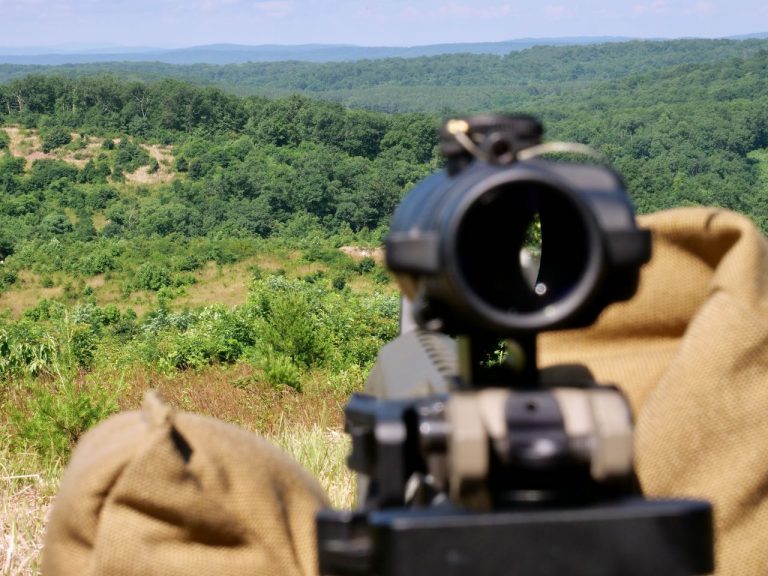
The TA33 does not lend itself well to long periods of scanning or observation through the optic. The field of view is too narrow to help with situational awareness. Since so much of the surrounding world is visible around the magnified area, it can induce more eye fatigue over time as you peer through it.
So, to reiterate, the best use of the TA33 is to get a better look at and shoot a target that you've already identified through other means like visual scanning, binoculars, or whatever.
If you want to use your optic for scanning and identifying targets, what I would call a marksman's optic, then I think you're better served with another choice.
Any Other TA33 Faults?
The small FOV may or may not be fault, depending on how you plan to use the optic. There are a few other things I think are worth bringing up, though. In fact, these aren't specific to the TA33 but rather Trijicon's whole ACOG lineup.
For a long time, the Trijicon ACOG was the default answer to your prismatic optic needs. Sure, there was close (if not slightly superior) competition from Elcan, but with that you're also dealing with imported optics and less support. For most people, ACOG was the answer.
The trouble is that Trijicon doesn't seem to care about enthusiasts like you and I. They are concerned with big contracts from the government or private companies buying thousands of optics at once. If these contacts don't ask for it, then Trijicon isn't likely to do it- and that's unfortunate.
Illumination
Case in point, I was excited when Trijicon started releasing the LED-illuminated ACOGs with the TA02 and TA110 series. LED illumination is more versatile across environmental conditions, especially low light, and batteries are way easier to swap than radioactive tritium. Yet, after releasing the TA02 and TA110, Trijicon never took the next step to do it with their compact models. That's a miss, in my opinion. The TA33 and TA44 compact ACOGs paired with CR123a or AAA-sized batteries would be awesome.
Instead, they've leaned into their LPVO lines and ignored the prism market while still charging a price premium. All the while, other budget friendly entrants have shown up from Primary Arms, Vortex, Swamp Fox, and others with good optics and battery powered illumination. They're figuratively eating Trijicon's lunch, and making it very hard to justify the cost of something like the TA33 over its inexpensive competitors.
The fiber optic illumination is good, don't get me wrong, but in this day and age when you know there's a market for battery illumination- and you've already figured out how to execute it well there's simply no reason to have dropped that ball.
Reticle Design
In another example of not doing it unless someone with deep pockets asks for it, we have the ACOG's reticle selection.

My problem is not that the reticle selection is limited, per se, as the crosshair, chevron, and horseshoe dot are all well-done in of themselves. It's really the stadia and BDC portions that need updating. For example, there's really no reason that a BDC reticle these days shouldn't have some form of wind holds.
There's been a lot of fantastic developments in reticle design. I commend the guys at Primary Arms for the work they've done there, and the rest of the industry really needs to pay attention. Shooting in the real world deals with more than just gravity, and reticles should reflect that.
BDC Choices
Since Trijicon deals primarily in government contracts, it should not be a surprise that the reticle BDCs reflect government configurations.
Unfortunately for you and I, that means we're stuck with BDCs designed for ammo combinations we don't actually shoot- like M855 from 14.5″ barrels, or 55gr from 20″ barrels.
Again, other optics companies work around this by producing “average” BDCs that represent the average ballistic coefficient and velocity across several loads, and present a “close enough” BDC for .223 or .308.
Even better, why not just put out a reticle with MRAD or MOA markings on it and skip the BDC business all together? Again, Trijicon's competition is doing this already, and it's leaving the brand further and further behind.
Non-Adjustable Eyepiece
Combat optics like the ACOG and Elcan are deigned for military use. Most military users are fairly young with good eyesight. As we age, our eyes stop adapting so well to the world around us, and that's where adjustable eye pieces are helpful.
Pretty much every modern magnified optic made, including Trijicon's VCOG line, have adjustable oculars to help compensate for eyesight. The fact that no ACOG features this is just another example of not really caring about the the mass market.
This isn't an issue for me personally, yet, but eventually it will be.
The Final Word
Despite the misgivings I have about Trijicon's stewardship of the ACOG line, the TA33 is a fantastic optic for the right kind of user. I think it is the best execution of a magnified optic intended to be used like a red dot sight, and it even weighs less than many of the quality red dot sights on the market. For general purpose “gunfighter” use between 0 and 300 yards, I can't think of anything that does it better.
If you're wanting to use it more like a rifle scope, though, where you could spend more time behind it scanning for targets and gathering situational awareness, then I don't think the TA33 is right for you. You'll want more field of view and a larger sight picture to “fill up” what your shooting eye sees.
Is it worth the roughly $900 that it costs these days? For people who demand highest quality equipment made in the USA (or at least not China), then yes. It's a well-engineered optic designed to last forever.
But, and this is a big BUT, if you don't mind looking a little further downmarket and taking some risk on non-military optics, I think you'd be surprised at what you can get for half the price or less from companies like Swamp Fox, Primary Arms, Sig, Vortex, and Crimson Trace. The Crimson Trace optic, CTS-1100, is apparently made in Japan- which might matter to you if you're in the market and don't want to buy something from China.
Future Development?
I don't hold out hope that Trijicon will implement some of my suggestions any time soon. In fact, I wouldn't be surprised to see more models dropping from their lineup rather than added. I've been told directly by one company, who was ditching their prism selection, that the market is completely focused on LPVOs right now. To me, I think that makes my working theory that prisms will see a resurgence in the next few years all the more plausible.
It's a bit like the stock market. When everyone is being greedy, start being cautious. When everyone is being cautious, start being greedy. If a company get get this right, and Trijicon is better positioned than most, I think they'll have a big leg up.
Read this article in its entirety at The Everyday Marksman.



